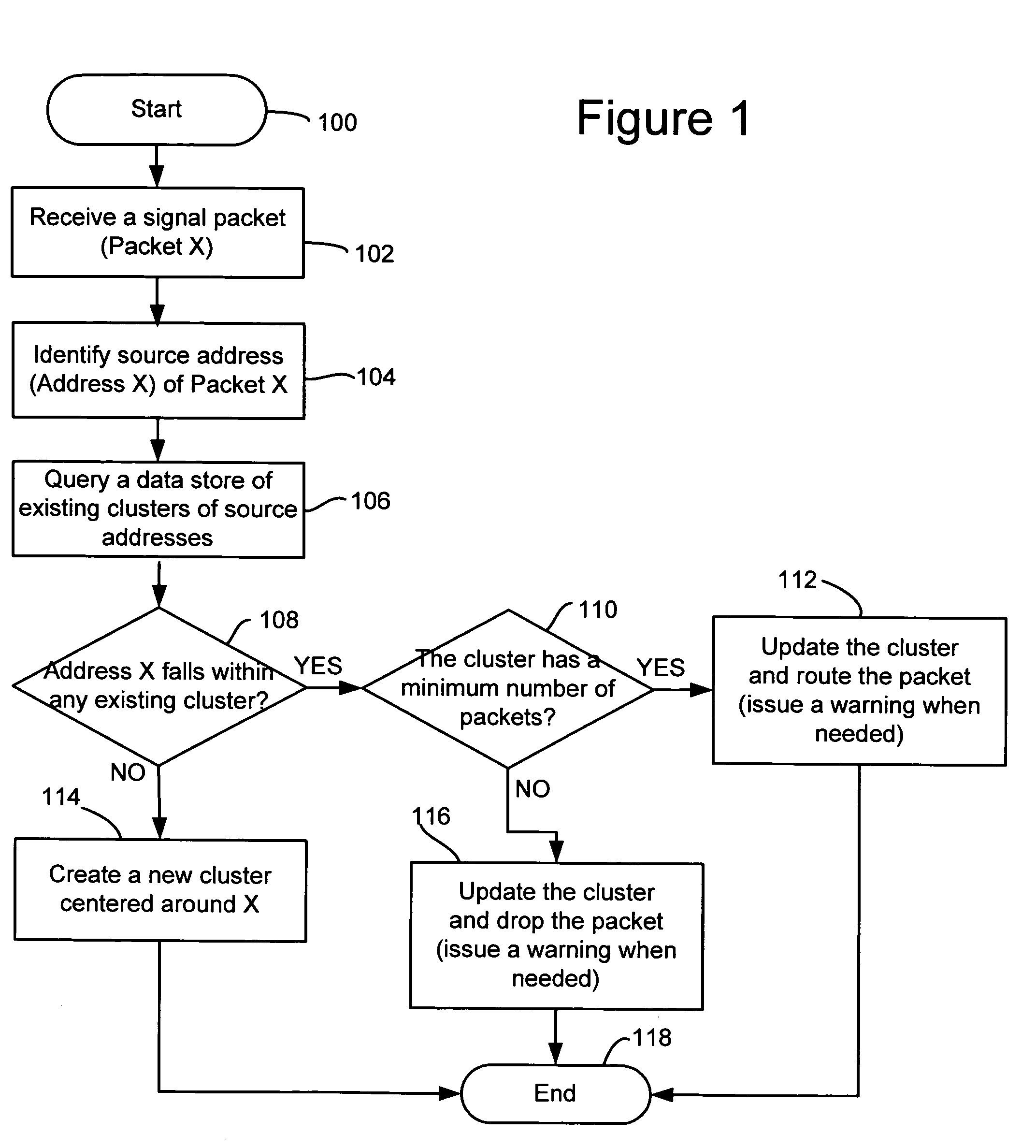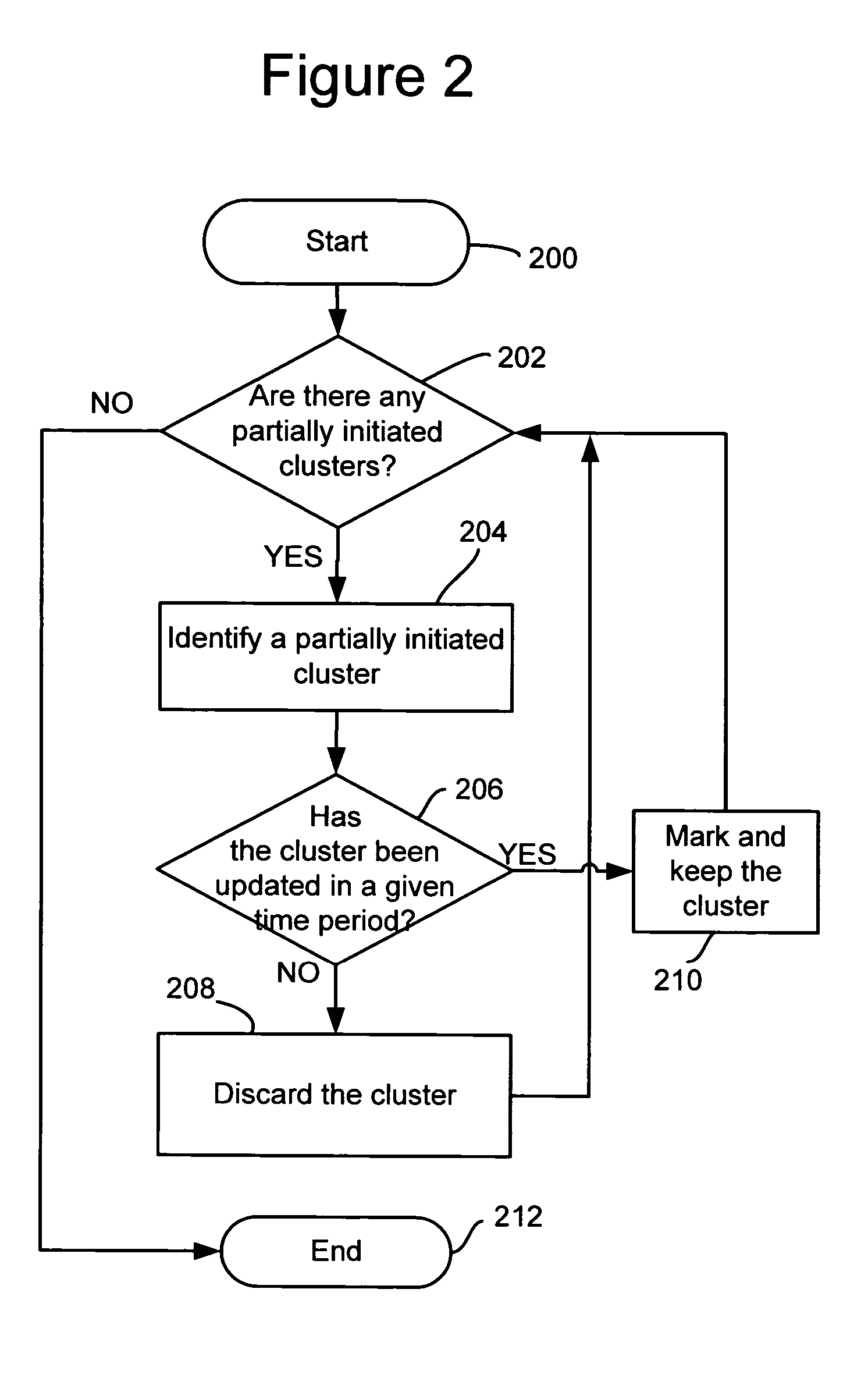Technique for monitoring source addresses through statistical clustering of packets
a packet and source address technology, applied in the field of computer and communication networks, can solve problems such as denial of service attacks, and ddos attacks, and achieve the effects of limiting and/or blocking legitimate users' access
- Summary
- Abstract
- Description
- Claims
- Application Information
AI Technical Summary
Benefits of technology
Problems solved by technology
Method used
Image
Examples
Embodiment Construction
)
[0026]Referring to FIG. 1, there is shown a flow chart illustrating an exemplary method for monitoring source addresses through statistical clustering of packets in accordance with an embodiment of the present invention.
[0027]The exemplary method starts in step 100.
[0028]In step 102, a signal packet may be received by a network element. The network element may be a computer, a server, or a content-aware switch / router having one or more connections to a computer and / or communications network. For illustration purposes, the exemplary method will be described with reference to Internet Protocol Version 4 (IPv4) though the method should be applicable to other communication protocols and future versions of Internet Protocols including IPv6. Also for illustration purposes, the signal packet is hereinafter referred to as “Packet X.”
[0029]In step 104, at least part of a source address of Packet X may be identified. The source address may be an identifier string or number, embedded in the p...
PUM
 Login to View More
Login to View More Abstract
Description
Claims
Application Information
 Login to View More
Login to View More - R&D
- Intellectual Property
- Life Sciences
- Materials
- Tech Scout
- Unparalleled Data Quality
- Higher Quality Content
- 60% Fewer Hallucinations
Browse by: Latest US Patents, China's latest patents, Technical Efficacy Thesaurus, Application Domain, Technology Topic, Popular Technical Reports.
© 2025 PatSnap. All rights reserved.Legal|Privacy policy|Modern Slavery Act Transparency Statement|Sitemap|About US| Contact US: help@patsnap.com



